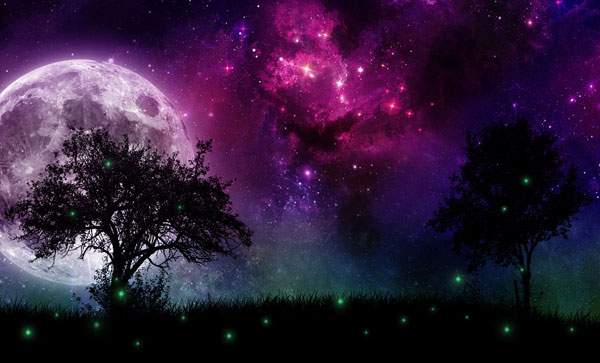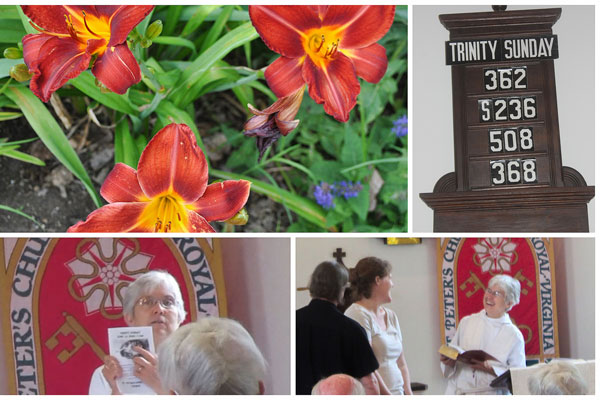Midsummer’s Night, Celebrate Light and community-
We pass Midsummer’s Night in June . European celebrations that accompany the actual solstice, or that take place on a day between June 21 and June 24, and the preceding evening
The Midsummer’s night celebration began in pre -Christian times when it was believed that forces could slip between this world and the next at a time when there was more light than at any time of the year. Fires were lit to ward off the evil spirits.
We may think of Midsummer’s Night in terms of Shakespeare’s play of the same name. Ironically, most of the play takes place in a dark forest in a wild, mysterious atmosphere, rather than in the light, in which the magical elements of Shakespeare’s plot can be played out. One of the subplots involves the brawl of the ferries, Oberon and Titania which creates a disturbance in nature.
Midsummer’s Night is the pagan celebration of the solstice. The Compline service is the Christian celebration. It is more general and can and is said daily by many in the world.
The ancient office of Compline derives its name from a Latin word meaning ‘completion.’ Dating back to the fourth century, and referenced by St. Benedict, St. Basil, and St. John Chrysostom, Compline has been prayed for continuously since then.
The practice of daily prayers grew from the Jewish practice of reciting prayers at set times of the day known as zmanim.
Catholics set up official prayers at the times of the day during the middle ages. The monastic prayer cycle was designed as a means of devoting the whole of one’s daily life to the Lord. It is called the liturgy of the hours. Compline was at 7pm
The compline service is documented in the Prayer book, one of the additions of the current book. It can be done in many ways, particularly bringing prayers from other sources, such as the following.
Prayers at the Close of Day
There are many Anglican prayer books in the world- at least 50. The Prayer book is a treasure trove of spiritual richness. Each has unique prayers as we conclude our day. Here are a sample:
From the New Zealand Prayer Book:
Support us, Lord, all the day long, until the shadows lengthen, and the evening comes, the busy world is hushed, the fever of life is over, and our work done; then Lord, in your mercy, give us safe lodging, a holy rest and peace at the last. God our judge and our companion, we thank you for the good we did this day and for all that has given us joy. Everything we offer as our humble service. Bless those with whom we have worked, and those who are our concern. Amen”
“Holiness; make us pure in heart to see you; make us merciful to receive your kindness and to share our love with all your human family; then will your name be hallowed on earth as in heaven.
“It is night after a long day. What has been done has been done; what has not been done has not been done; let it be. “
From the Book of Common Prayer (1979)
“O God, your unfailing providence sustains the world we live in and the life we live: Watch over those, both night and day, who work while others sleep, and grant that we may never forget that our common life depends upon each other’s toil; through Jesus Christ our Lord. Amen.”
“Keep watch, dear Lord, with those who work, or watch, or weep this night, and give your angels charge over those who sleep. Tend the sick, Lord Christ; give rest to the weary, bless the dying, soothe the suffering, pity the afflicted, shield the joyous; and all for your love’s sake. Amen.”
“Guide us waking, O Lord, and guard us sleeping; that awake we may watch with Christ, and asleep we may rest in peace.”
From the Celtic tradition
“Renew me this night in the image of your love, renew me in the likeness of your mercy, O God.” – Celtic Benediction, J. Philip Newell
“May the peace of the Spirit be mine this night; may the peace of the Son be mine this night; may the peace of the Father be mine this night. Amen” – Celtic Worship Through the Year
From the Canadian Prayer Book
“Merciful God, we have not loved you with our whole heart, nor our neighbours as ourselves. For the sake of your Son Jesus Christ, forgive us what we have been, accept us as we are, and guide what we shall be. Amen”
“To you before the close of day, Creator of all things, we pray that, in your saving constancy, our guard and keeper you would be. Save us from troubled, restless sleep; from all ill dreams your children keep. So calm our minds that fears may cease and rested bodies wake in peace. A healthy life we ask of you: the fire of love in us renew, and when the dawn new light will bring, your praise and glory we shall sing. Almighty Father, hear our cry through Jesus Christ, our Lord, most high, Whom with the Spirit we adore forever and for evermore. Amen.”





